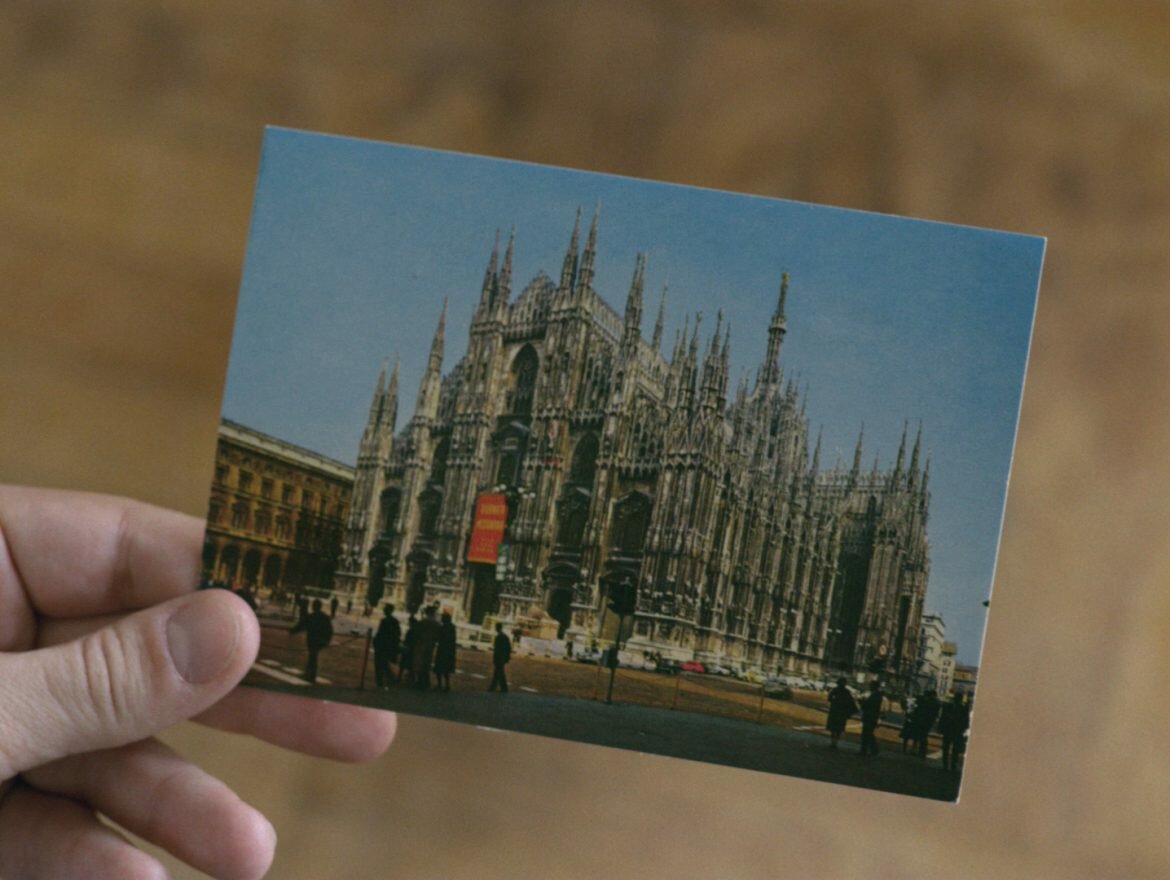Ricky D’Ambrose’s riddling feature Notes on an Appearance is possibly a detective story about a young man’s disappearance in New York, or a series of random isolated events, one of which being that a young man disappears. Perhaps it’s both, and that’s exactly the point: the terrifying ordinariness of a person’s vanishing, a mystery wherein circumstance, motive and exposition are so radically paired down that the event of a person gone missing neatly organizes itself into the unending flow of things that just happen. Compressed into 60 minutes, D’Ambrose’s film pleasures in narrative gaps and holes, lingering on the surface of an incomprehensible reality, where none of the dots are made to connect.
The young man is David (Bingham Bryant), a quiet, somewhat aimless twenty-something with nascent writing aspirations newly arrived in Brooklyn, living with his friend Todd (Keith Poulson), who is working on a biography of a controversial, elusive political philosopher Stephen Taubes. David assists Todd in the research; responsible for watching and cataloging hundreds of VHS tapes filmed by Taubes of places he visited: low-fi video footage of tram rides through rainy Lisbon, ferry rides along the Bosphorus, and lower Manhatta, a train ride through a landscape of factories and tower blocks a forest, the ocean. This footage crops up like unexpected hauntings from another realm between scenes of David’s daily life in Brooklyn: going to a café, a shoe store, lying in bed reading archive news clippings regarding Taubes, sleeping.
Then: an anonymous empty street somewhere in Brooklyn, the perfect geometric order of buildings, windows, right angles and lines receding away into the background. David, dwarfed by the architecture of the frame, ambles down the street, rising opera music, a creeping slowness, the shot held until he disappears from view and from the film. Todd and David’s girlfriend Madeleine (Tallie Medel) search for him, wading through an assemblage of circumstantial clues, the film obsessed with showing us the things David left behind, the remnants or leavings of a person after they’re gone: receipts, tickets, notebooks, diary entries, postcards from abroad, etc. A world of objects and evidence suggesting appearances, happenings, events – but what does it taken together all add up to? So many close-ups of David’s diary entries, the content entirely unremarkable, mostly listings of daily expenses. D’Ambrose has a fascination with the textual, offering us detailed close-ups of fake The New York Times, and New Yorker articles – all having to do with the violent legacy of Stephen Taubes – business cards, book covers, typed and handwritten letters, hints of threat and cues of an inevitable disaster. But how does it relate to the disappearance and the posters of Taubes that start popping up all over the city and the VHS footage? A kind of eerie banal arbitrariness creeps into the film, suggestions of vague or impossible connections between disparate events across time, the dark stuff of a Roberto Bolaño story. There is a sadness to the mystery; the unbearable dread that none of this might be connected. Strange sounds glued to non-corresponding images: street demonstrations, Taubes’ speeches, off-screen scraps of conversation, the crash of ocean waves, seagulls.
D’Ambrose has organized the telling of the story around a set of imposed narrative self-impositions, restrictions and formal simplifications, reveling in the obtuse, the unspoken, the provisional. His aesthetic is of a sobering minimalism placing him in the same lineage as Robert Bresson and Straub/Huillet, with the acting also refreshingly subdued and muted. No false attempts at realistic behavior or performances striving towards an already constructed naturalism. There is a distance between the actor and what he/she says, as if their lines did not belong to them.
Even his use of space involves a flattening of New York’s geography. The city is reduced to a series of close-ups of street and subway maps, each one delineating exactly where we are located; the jumble of the city organized into a satisfying symmetry. It is a diagrammatic New York – a place abstracted from the three-dimensional grid, with the set locations not placed in any sort of continual space, with the characters often speaking in medium close-ups against primary-colored backgrounds, bare white walls and inhabiting sparsely furnished rooms. So many shots of table surfaces, hands placing or removing coffee cups and plates, nameless cafes, blind facades, rooms existing anywhere – a collage of surfaces and planes resulting in a sculptured configuration of a paper flat city.
Notes on an Appearance is an aesthetically bold first feature from a guiding intelligence interested in stretching the ellipses between plot points as far apart as possible. And if the film’s antecedents, both literary and filmic, border on the obvious, D’Ambrose is able to absorb them into a vision entirely his own.




